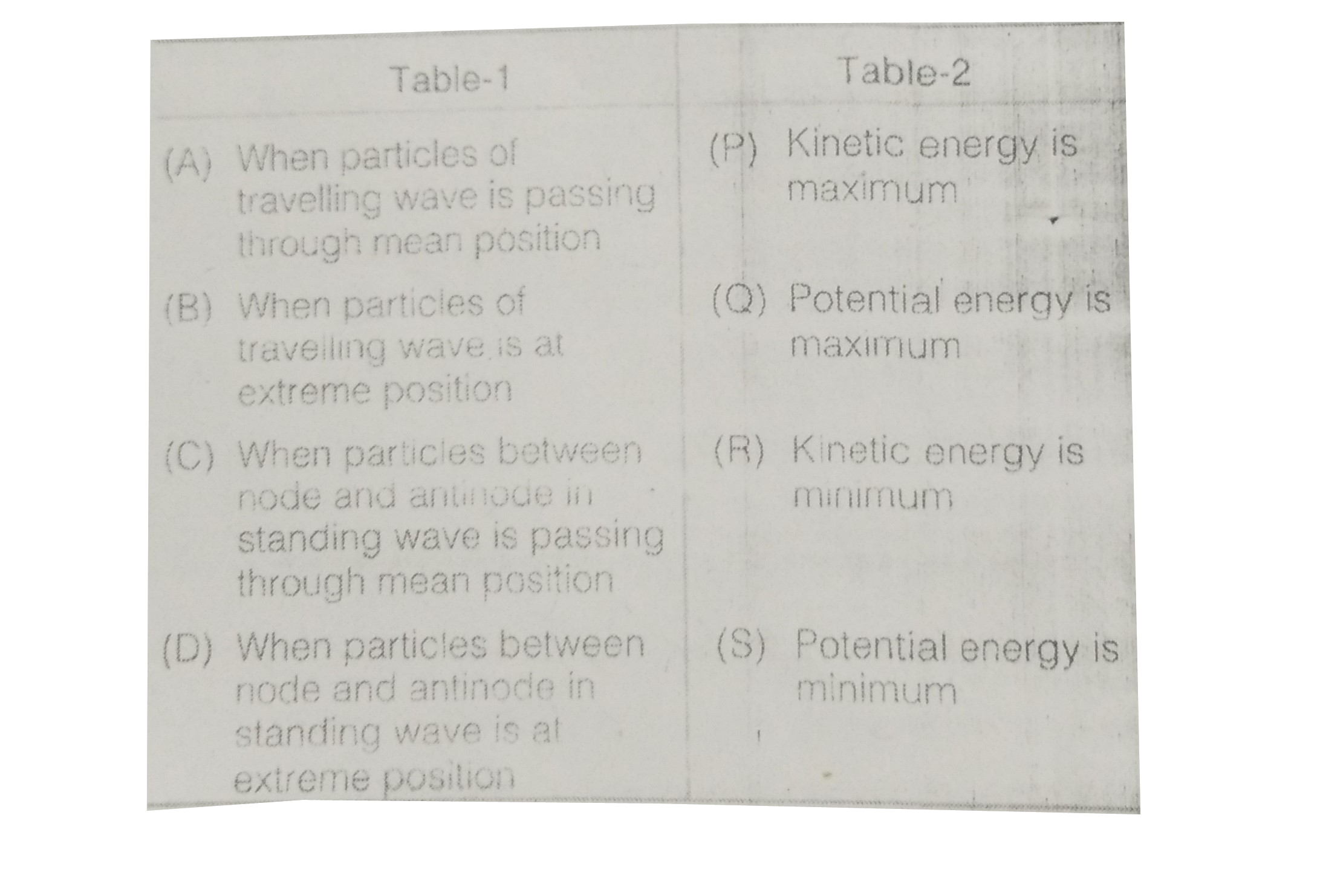A 20g partical is oscillating simple barmonically with a period of 2second and maximum kinetic energy 2J. The total machanical energy of the partical is zero , find
a Amplitude of oscillation
b. potential energy as a punction of displacement x relative to mean position.
a. Given m=20g=20×10−3kg
Time period , T=2sandKmax=2J
We havemaximum kinetic energy : Kmax=12mω2A2
Hence, 2=12×20×10−3×(2π2)2.A2⇒A=10√2πm
b. We know total energy of a partical is of oscillation energy and minimum poitential energy.
E→tal=Eoscillation+U0
But oscillation energy of partical: Eoscillation=Kmax=2J
As potential energy in reation with displacement x from mean position is
U(x)=12kx2+U0=12(mω2)x2+U0
=12(mω2)x2−2
12×201000×(2π2)2x2−2
=π2100x2−2 (S.I. units)
Topper's Solved these Questions
- BOOK - CENGAGE PHYSICSCHAPTER - LINEAR AND ANGULAR SIMPLE HARMONIC MOTIONEXERCISE - Solved Example15videos
LINEAR AND ANGULAR SIMPLE HARMONIC MOTION
- BOOK - CENGAGE PHYSICSCHAPTER - LINEAR AND ANGULAR SIMPLE HARMONIC MOTIONEXERCISE - Exercise 4.123videos
LINEAR AND ANGULAR SIMPLE HARMONIC MOTION
- BOOK - CENGAGE PHYSICSCHAPTER - KINETIC THEORY OF GASES AND FIRST LAW OF THERMODYNAMICSEXERCISE - Interger11videos
KINETIC THEORY OF GASES AND FIRST LAW OF THERMODYNAMICS
- BOOK - CENGAGE PHYSICSCHAPTER - MISCELLANEOUS KINEMATICSEXERCISE - Interger type3videos
MISCELLANEOUS KINEMATICS
Similar Questions
Starting from the origin a body oscillates simple harmonically with a period of 2s . After time 1x second willthe kinetic energy be 75% of its total energy , then value of x is
View SolutionA particle executes simple harmonic motion of ampliltude A. At what distance from the mean position is its kinetic energy equal to its potential energy?
View Solution
Knowledge Check
- Question 1 - Select One
Starting from the origin, a body oscillates simple harmonically with a period of 2 s. After what time will its kinetic energy be 25% of the total energy?
A112sB16sC14sD13s - Question 2 - Select One
In SHM, kinetic energy is (1/4)th of the total energy at a displacement equal to
(Here A is the amplitude of oscillations.)AA2BA√2C√32AD2√3A - Question 3 - Select One
In case of mechanical wave, a particle oscillates and during oscillation its kinetic and potential energy changes. So, when particle is passing through mean position,
Akinetic energy is maximumBpotential energy is minimumCboth (A) and (B)Dnone of these
In case of mechanical wave a partical oscillates and during sacillation its kinetic energy and potential energy changes.
 View Solution
View SolutionIn a simple harmonic oscillation, what fraction of total mechanical energy is in the form of kinetic energy, when the particle is midway between mean and extreme position.
View SolutionForce acting on a particle is F=−8x in S.H.M. The amplitude of oscillation is 2 (in m) and mass of the particle is 0.5 kg. The total mechanical energy of the particle is 20 J. Find the potential energy of the particle in mean position (in J).
View SolutionThe total energy of a harmonic oscillator of mass 2 kg is 9 J. If its potential energy at mean position is 5 J , its KE at the mean position will be
View SolutionRatio of kinetic energy to potential energy of an oscillator when it is at distance 1/N times of amplitude from mean positions in
View Solution

